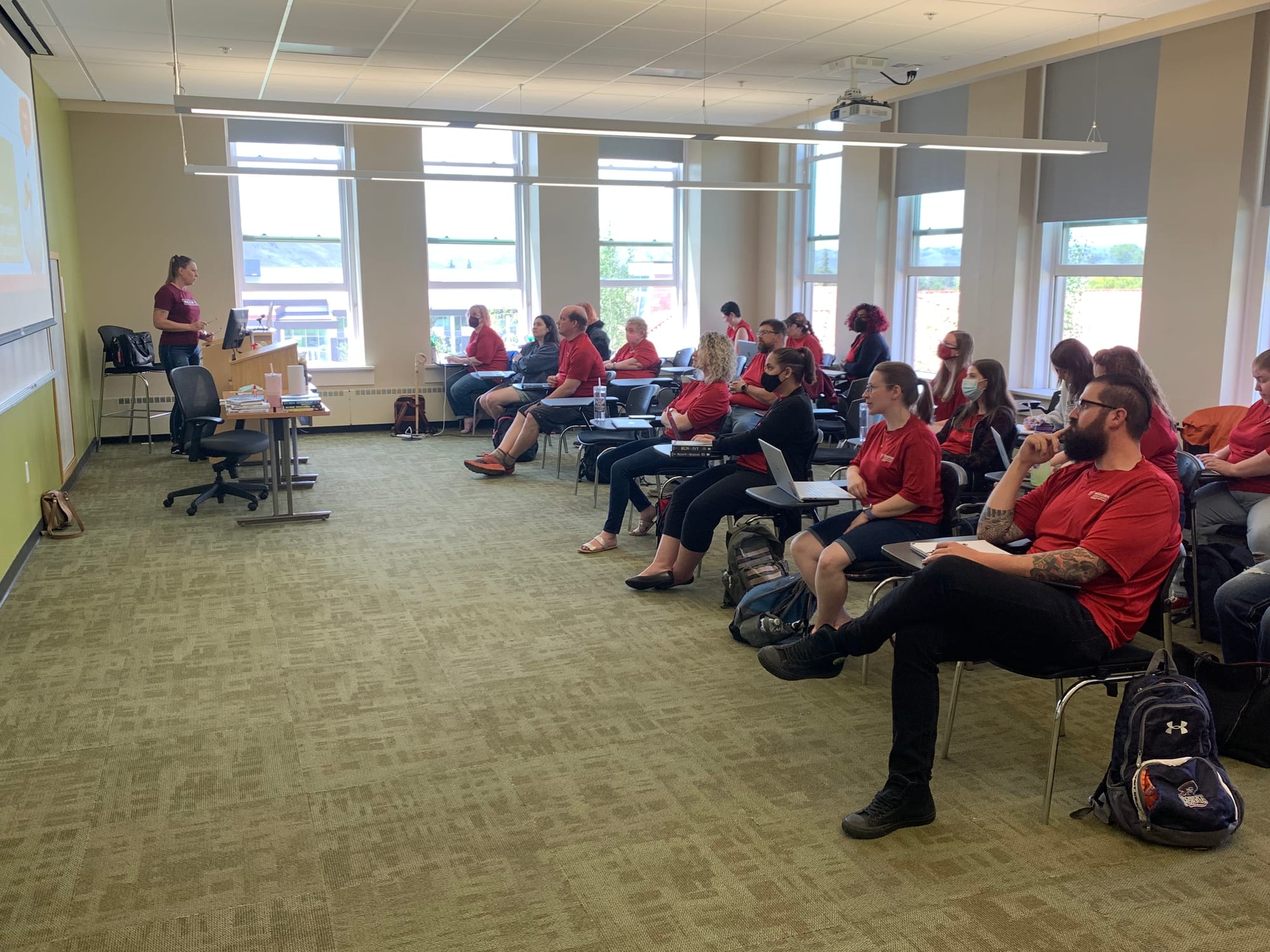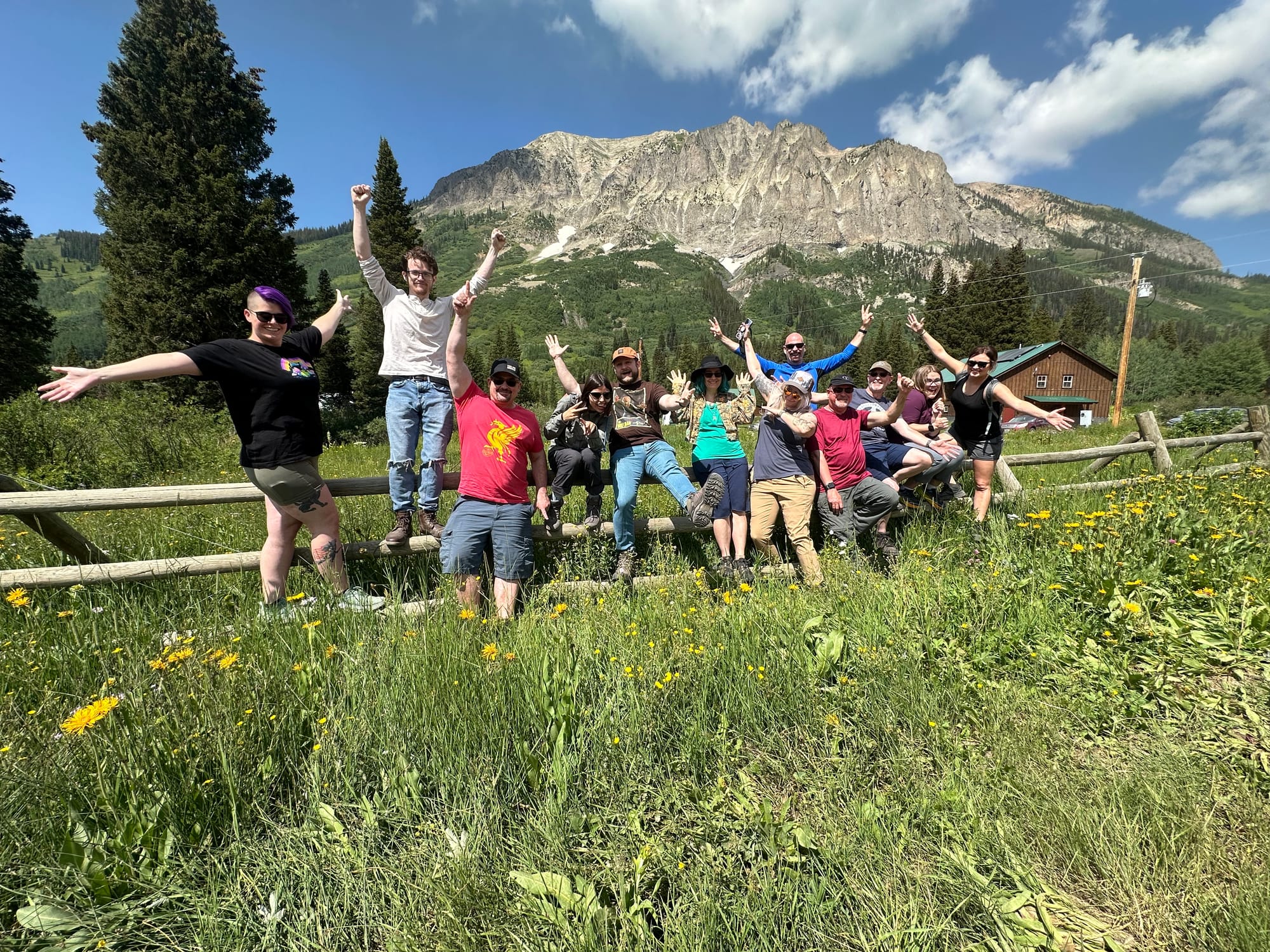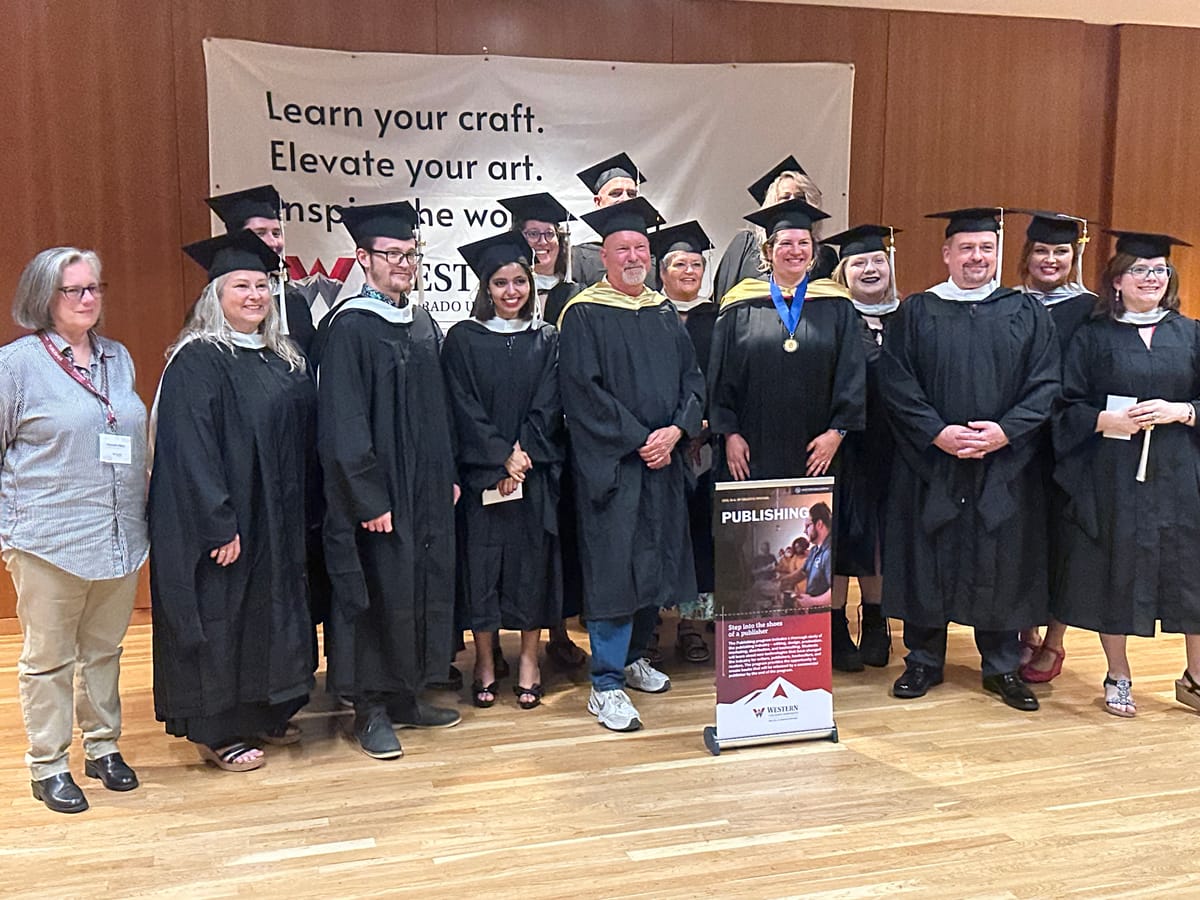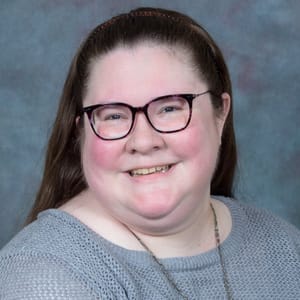Summer on a college campus is much quieter than any other time of the year. Students have returned home for a few months between semesters or have taken a break from coursework for internships, summer jobs, or just to travel. But for fifteen graduate students each year on the Western Colorado University (Western) campus, in the mountains of Gunnison, Colorado, summer is perhaps the most exciting time of their college careers. These students have a somewhat unusual college experience; for one, these summer classes are the only time they’re required to set foot on campus. Fall and spring semesters take place entirely online, sometimes from states and even countries away. For another, when they graduate, these students will leave Western with more than a diploma to their name.
Each will also carry with them two books they published independently over the course of their program.
These students are part of the university’s publishing concentration within its graduate program in creative writing, an accelerated thirteen-month, low-residency program designed to teach students the ins and outs of the publishing world. Unlike other publishing-focused degrees, however, the coursework at Western does not focus solely on traditional publishing; it’s one of the only programs in the world that focuses on indie-publishing as well.

“There are half a dozen other publishing master’s degrees out there. But they’ve been around for a long time, and from what I can see … they’re centered on you getting a job in New York,” says program director Kevin J. Anderson. “But that’s not what people want anymore.”
Anderson is an author himself of more than one hundred eighty novels, including for franchises such as Star Wars, X-Files, and Dune, and co-publisher at WordFire Press. He started the program six years ago, and to date, fifty-three students have graduated from the course. He says he was inspired to start the program because of how quickly the publishing industry is changing and how much is expected of authors and publishers in order to succeed. “Students are hungry to learn how to do it themselves and get it right, and they need to wear every hat,” he said in an interview with Publishers Weekly in 2023.
The program reflects that need for modern publishers to be well rounded. Coursework starts in July and continues through the fall and spring semesters, ending with a capstone course the following summer. The work is a mix of asynchronous readings and guest lectures by bestselling authors, publishing professionals, and representatives from adjacent companies—everyone from author Michael Anderle to representatives from Audible and Kobo.
“I think the best part of this program is that the instructors have experience in both traditional publishing and indie publishing, and they are able to pivot the course materials to react in real time to changes taking place in the industry,” writes Stace Johnson, a current student of the program.
Alongside the curriculum, students put their studies into practice, bringing two books into print by the time the program ends: an anthology curated by each year’s cohort and a reissued classic that they shepherd individually through the publishing process. Johnson says the connections the program fosters among its students is one of his favorite parts of the experience so far. “I already feel like some of the connections I've made will last the rest of my life,” Johnson writes. “I'm looking forward to the second week of residency and graduation next year.”

The anthology project begins with the very first class. Each group of students decides on an anthology theme, puts out a call for submissions, and reads through the slush pile to select stories to move past initial selections round. The final selections are made around mid-November in what Anderson calls the “Thunderdome”—“because two stories enter and one story leaves,” he says. Once the winning submissions are chosen, students write rejections for the stories that don’t make the cut, issue contracts for the accepted stories, work together to proofread the manuscripts, format them for print, and market their anthologies using techniques and programs that they’ve learned in their courses. The project is funded by Draft2Digital and published through WordFire Press, with the proceeds from the books helping to fund future projects and provide scholarships to students.
Along with compiling the anthology, students work during the program to publish books on their own, chosen from public domain titles available through Project Gutenberg or scanned from physical copies. “They have to get an old copy of the book so that they [can] compare line by line, because a lot of times re-issues or updates of the book have changes in the text … and that version isn’t out of copyright,” Anderson says. The students proofread the books, typeset them, design a cover, reach out to notable people for a foreword to add to the work, and release the books at a launch event held during their second summer.
Mark Leslie Lefebvre, who graduated from the program in 2024, says the opportunity to collaborate with other authors on both projects is invaluable. “Relationships are so critical across the board … so you get a really enhanced and very fast-paced introduction to that because you have to work collaboratively with other students. … That in itself is a beautiful microcosm of the overall industry.”
Students also occasionally collaborate with the other graduate creative writing programs Western offers. The university offers five areas of concentration: publishing, genre fiction, nature writing, poetry, and screenwriting. Anderson says the curriculums for each go hand in hand, and some students even return after graduating from one program to choose another concentration.
Anderson believes authors at any stage of their career can benefit from the publishing MA program—and Lefebvre is proof. Lefebvre got his start in the publishing industry in 1992 and has been a guest speaker since Western’s publishing program began. It was in 2022, however, while overhearing the class discussions and lectures, that he decided to apply to the program and become a student the following year. “No matter what courses you take, whether they’re online or in person, I don’t think there’s anything quite like this program,” he says. “I still look at the years of experience I’ve had working in the industry, managing bookstores, working for distributors and online retailers, and working with publishers and being a publisher myself. I still walked away having gained something from the course, having learned something valuable.”
Students of the program, like Lefebvre, have often come from the “trenches” of the publishing industry, Anderson says—some have self-published previously and want to improve their business, others have worked in traditional publishing and want to learn self-publishing strategies, and still others are professionals wanting to work for one of the Big Five publishers. "A lot of people just want to do better at their own indie author career. Other people want to form a full-on indie press, where they publish other authors,” he says. “I think that it really helps ground you better if you get this formalized start … and you do hands-on stuff. You see how it works, and you have a cohort of support people that can help you go through it.”
“If a New York Times bestselling author like Kevin J. Anderson, who has sold millions of copies of his books and been on the bestselling list numerous times, too numerous to count—if he’s continuing to learn about the industry, I think the rest of us have lots to continue to learn,” Lefebvre says.
The program only has room for around fifteen students each year, and Anderson says slots fill up quickly. Applications for the 2025-2026 academic year opened August 1. Those interested can visit https://western.edu/program/publishing or contact Anderson directly at kjanderson@western.edu.
Nicole Schroeder



